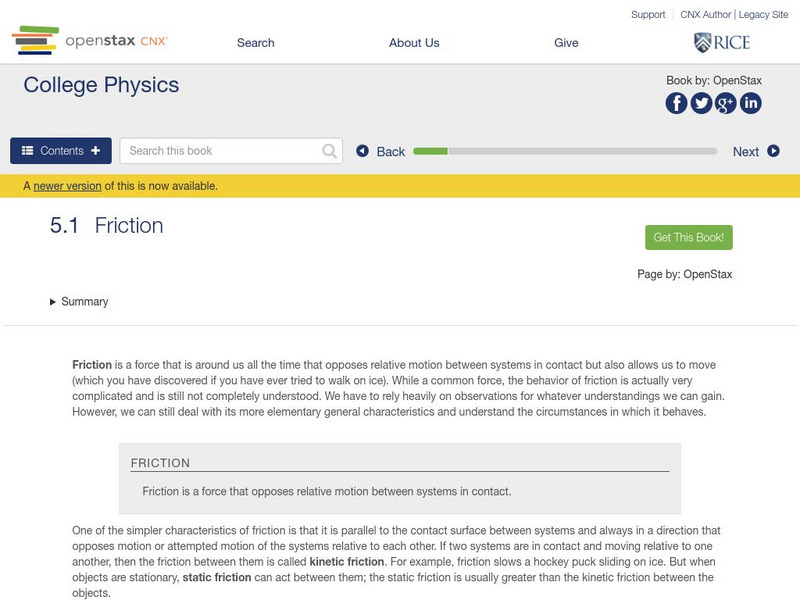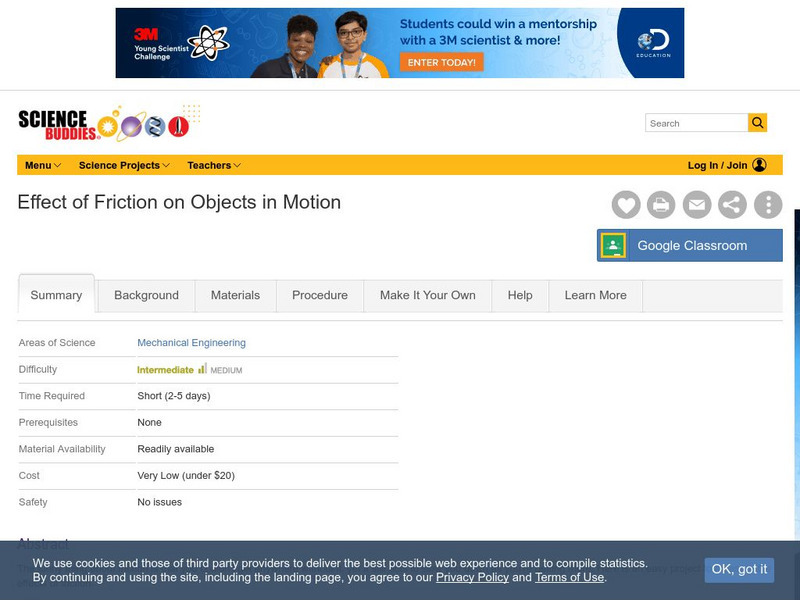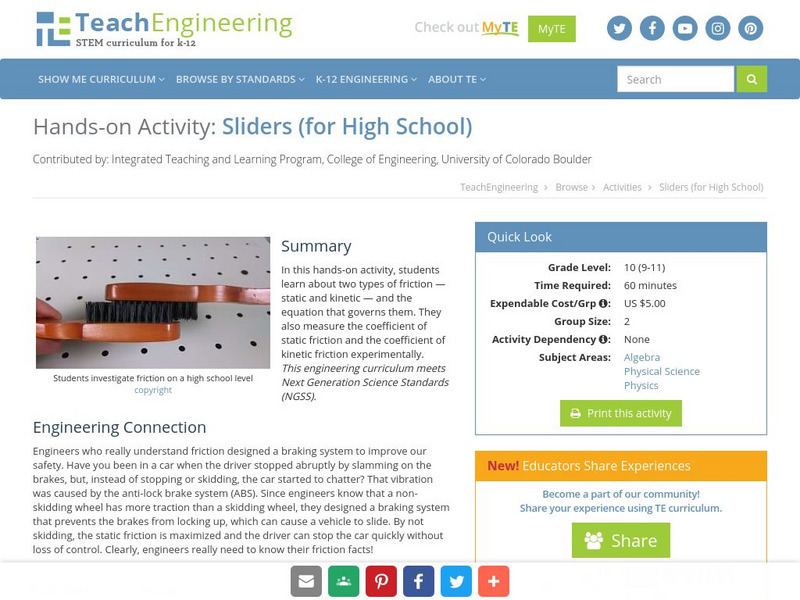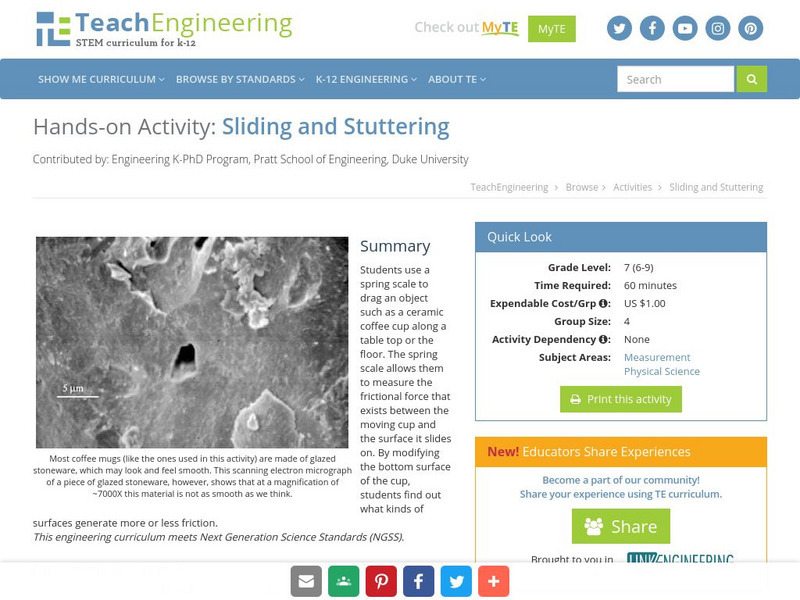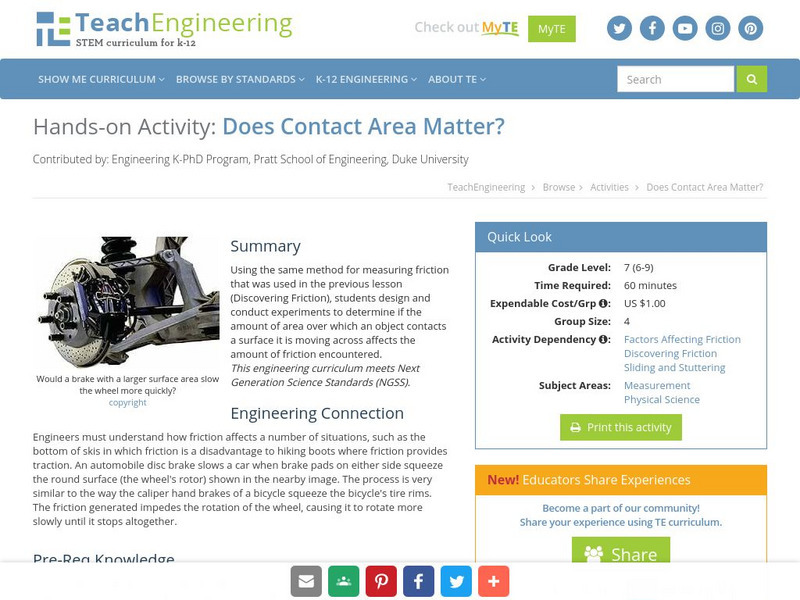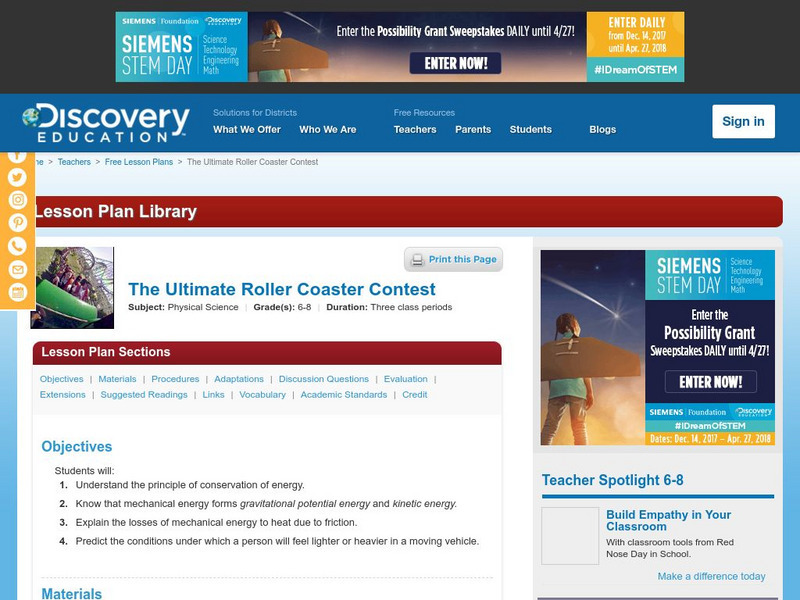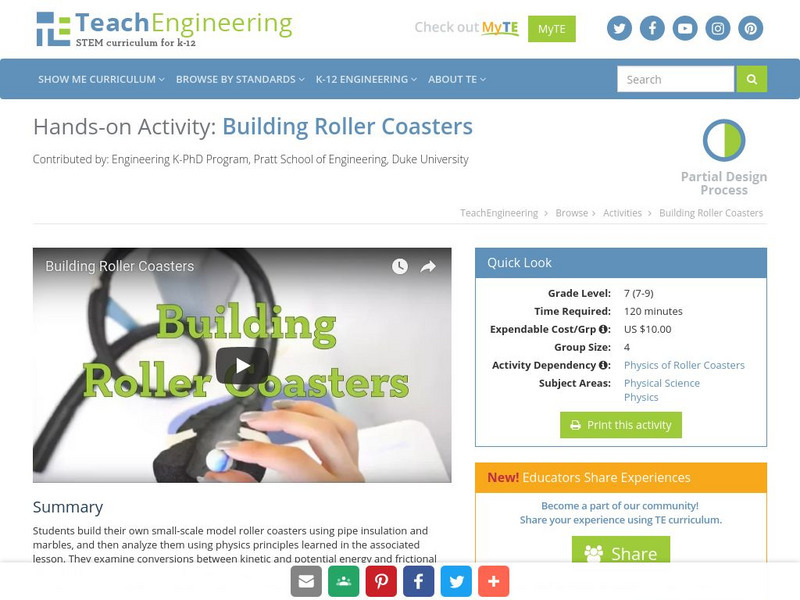University of Alaska
University of Alaska Fairbanks: Static and Kinetic Friction
Explains what static and kinetic friction are, what their coefficients of friction are in different scenarios, and how these concepts are applied when looking at automobile braking distances and vehicle control when driving.
New York University
New York Univ.: Tandon School of Engineering: Static and Kinetic Friction [Ppt]
Explains what static and kinetic friction are and discusses the coefficient of friction for different situations. Presents two simple lab experiments and real-life examples of friction in action.
OpenStax
Open Stax: Friction
In the following interactive students will begin to discuss the general characteristics of friction and describe the various types of it. They will also calculate the magnitude of static and kinetic friction.
Science Struck
Science Struck: Static Friction vs. Kinetic Friction: The Differences
Teaches what friction force is, the difference between static and kinetic friction, and how friction force is calculated.
Science Buddies
Science Buddies: Effect of Friction on Objects in Motion
The funny thing about friction is that you couldn't get anywhere without it, yet it still acts to slow you down as you're getting there. Here is an easy project to measure the effects of friction.
TeachEngineering
Teach Engineering: Imagine Life Without Friction
Students are introduced to the concept of inertia and its application to a world without the force of friction acting on moving objects. When an object is in motion, friction tends to be the force that acts on this object to slow it down...
TeachEngineering
Teach Engineering: Sliders (For High School)
In this hands-on activity, students learn about two types of friction - static and kinetic - and the equation that governs them. They also measure the coefficient of static friction and the coefficient of kinetic friction experimentally.
TeachEngineering
Teach Engineering: Sliding and Stuttering
Students use a spring scale to drag an object such as a ceramic coffee cup along a table top or the floor. The spring scale allows them to measure the frictional force that exists between the moving cup and the surface it slides on. By...
TeachEngineering
Teach Engineering: Does Contact Area Matter?
Using the same method for measuring friction that was used in the previous lesson (Discovering Friction), students design and conduct an experiment to determine if the amount of area over which an object contacts a surface it is moving...
Discovery Education
Discovery Education: The Ultimate Roller Coaster Contest
Young scholars design and build a three hill "tennis ball" roller coaster made of cardboard. During the design and building process, students explore the concepts of potential and kinetic energy and how they change as the roller coaster...
TeachEngineering
Teach Engineering: Building Roller Coasters
In this hands-on activity students learn about the laws of physics by creating a marble roller coaster.

![New York Univ.: Tandon School of Engineering: Static and Kinetic Friction [Ppt] PPT New York Univ.: Tandon School of Engineering: Static and Kinetic Friction [Ppt] PPT](https://d15y2dacu3jp90.cloudfront.net/images/attachment_defaults/resource/large/FPO-knovation.png)
